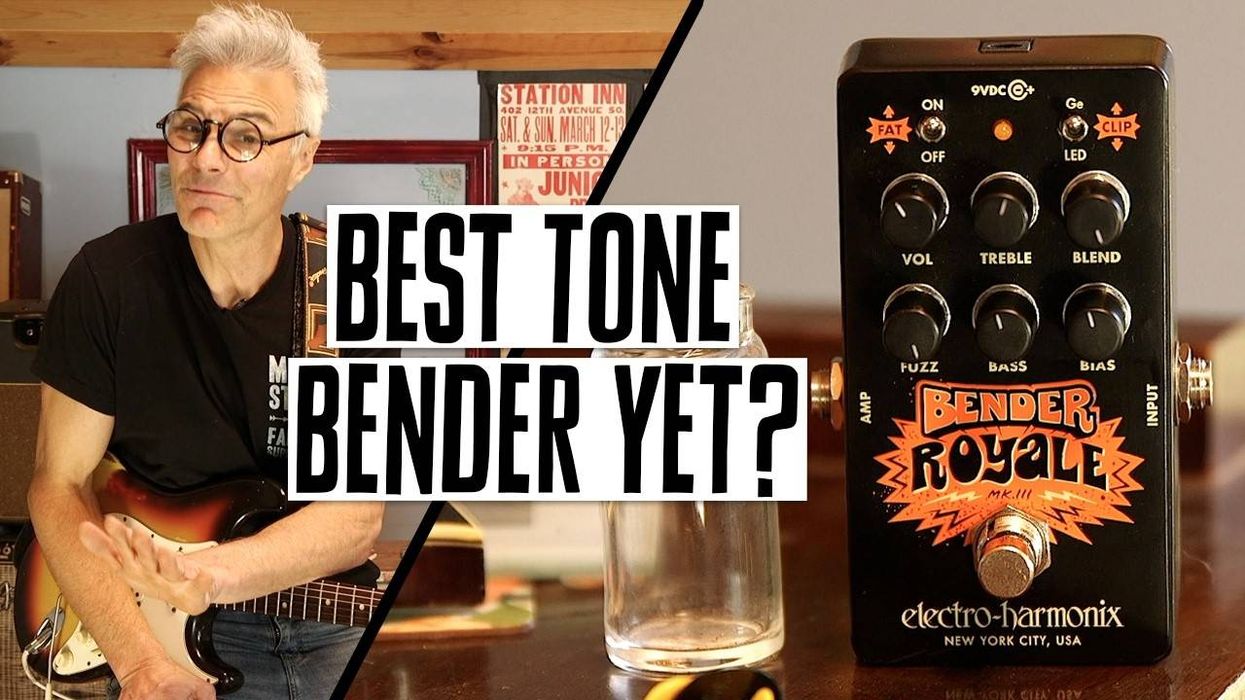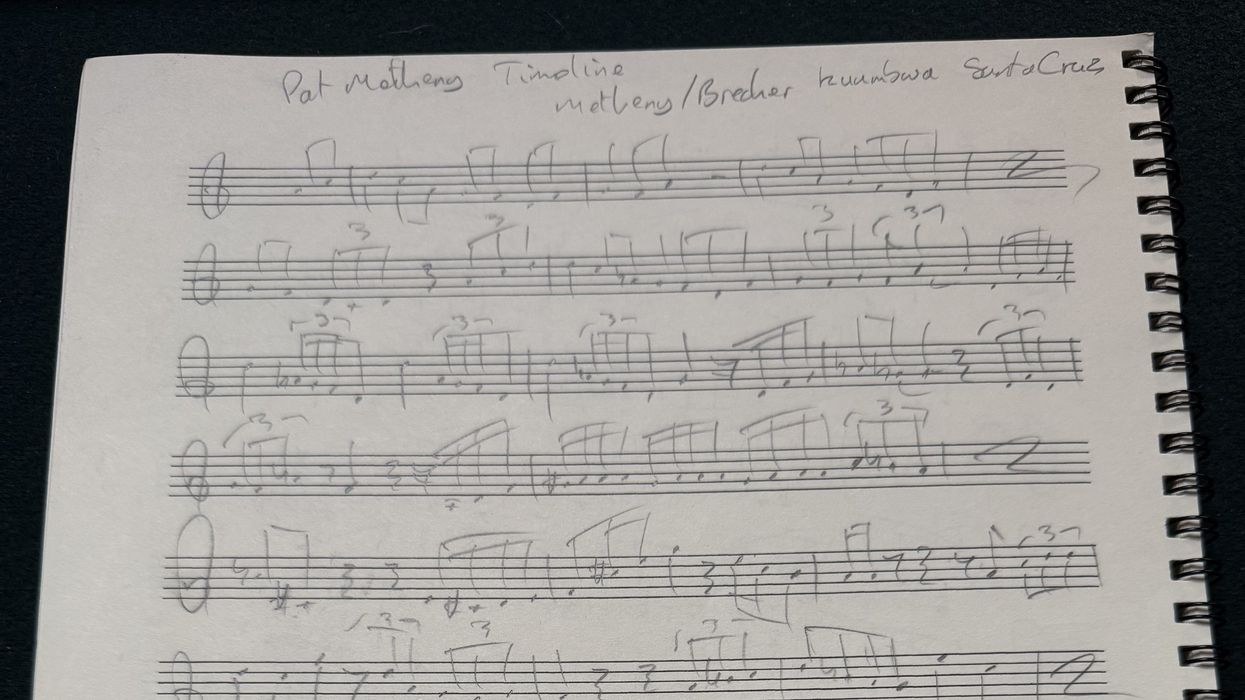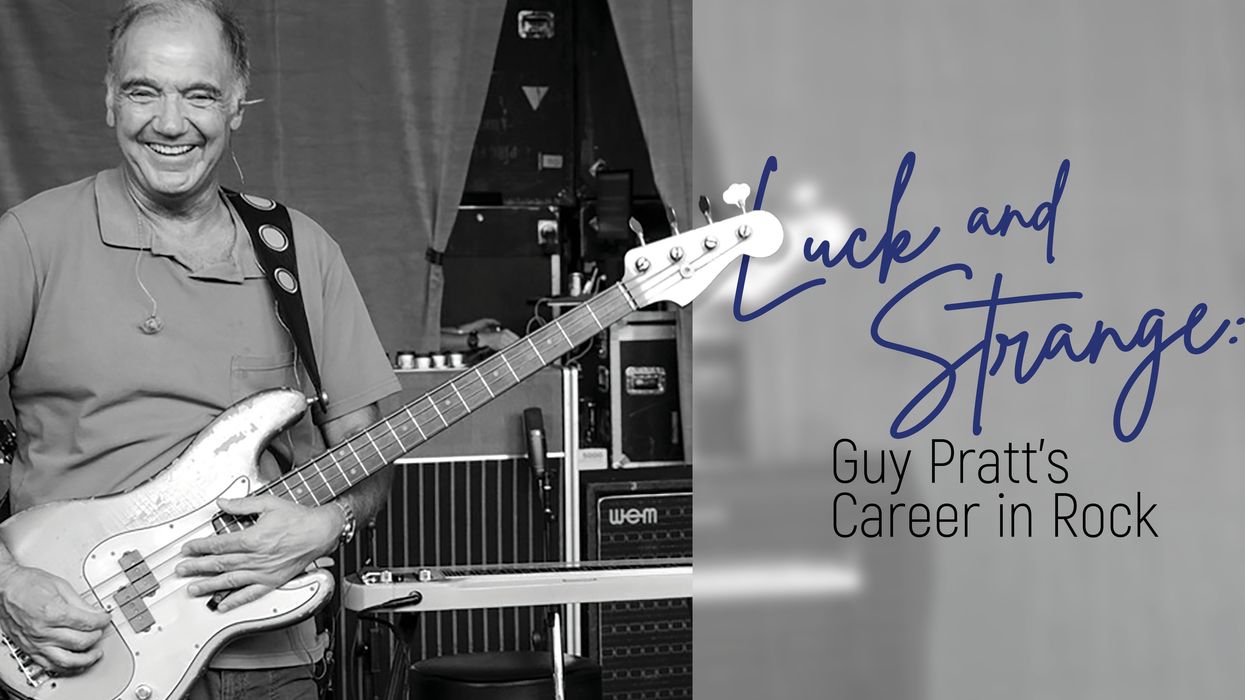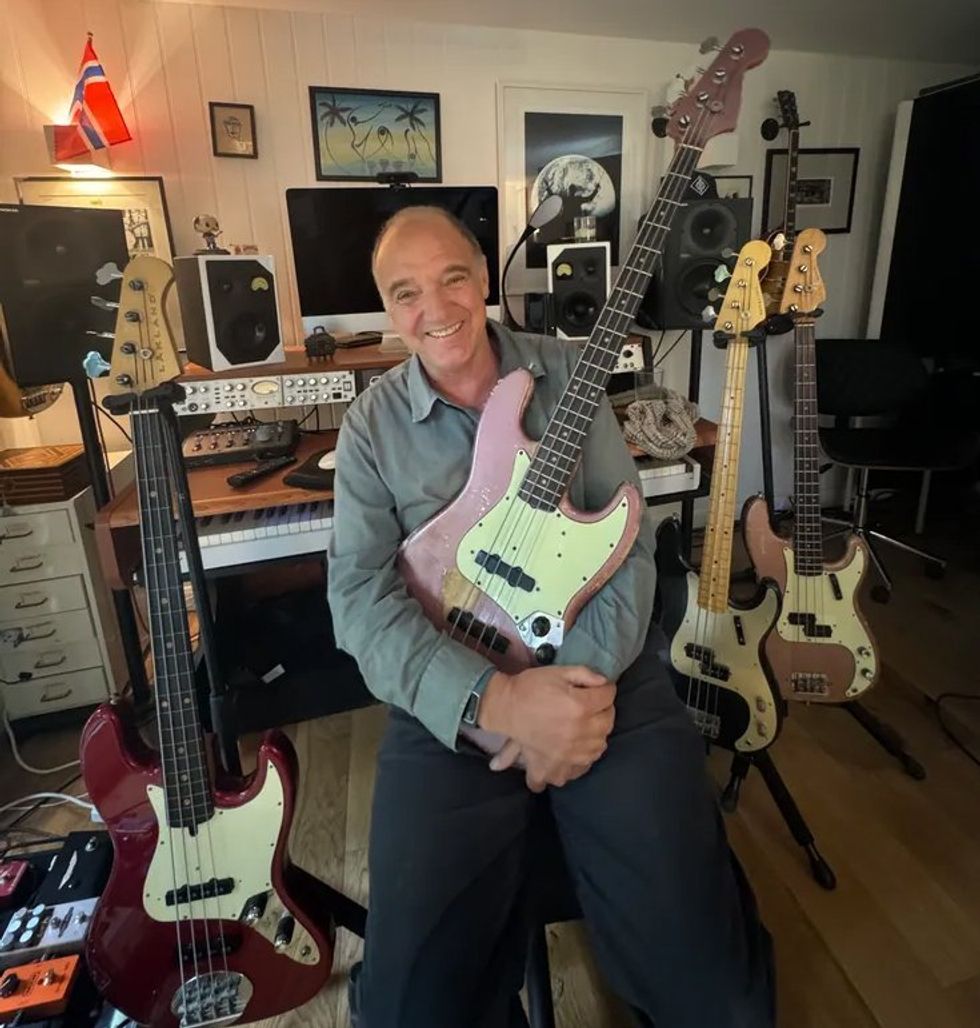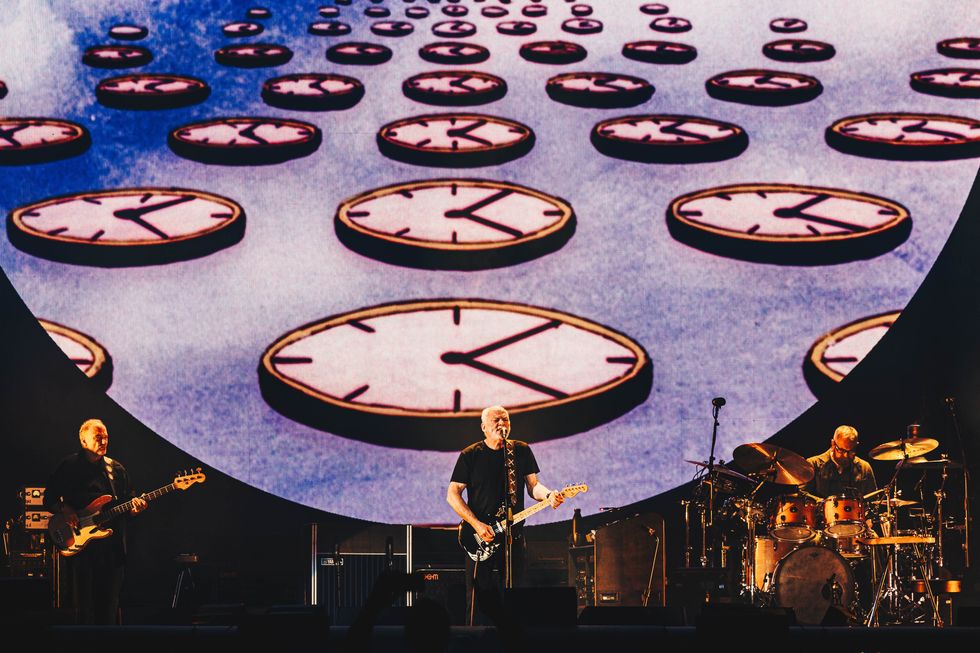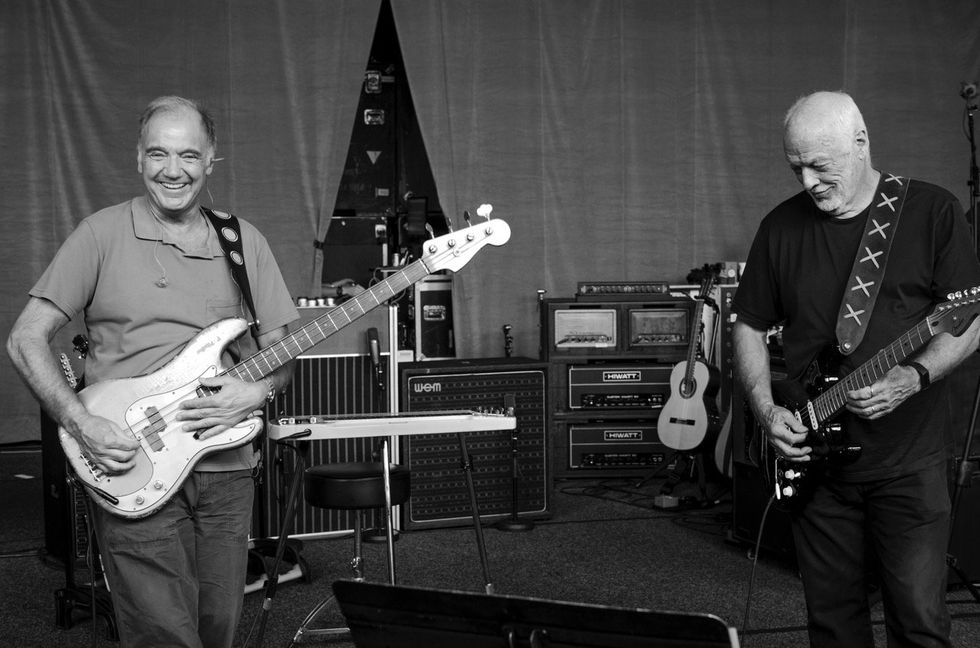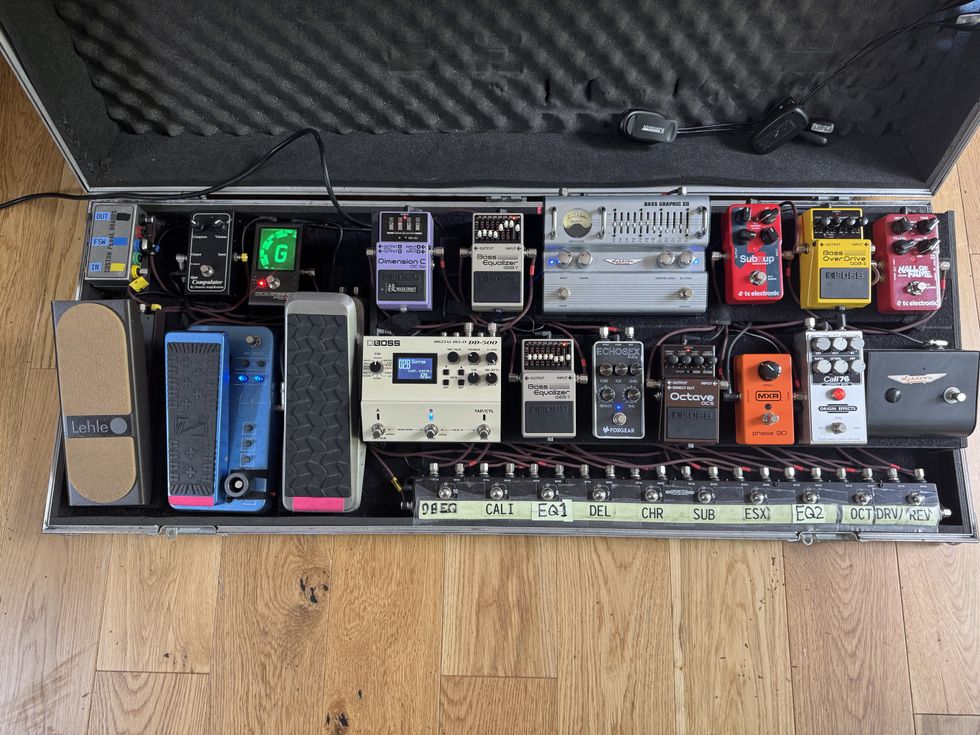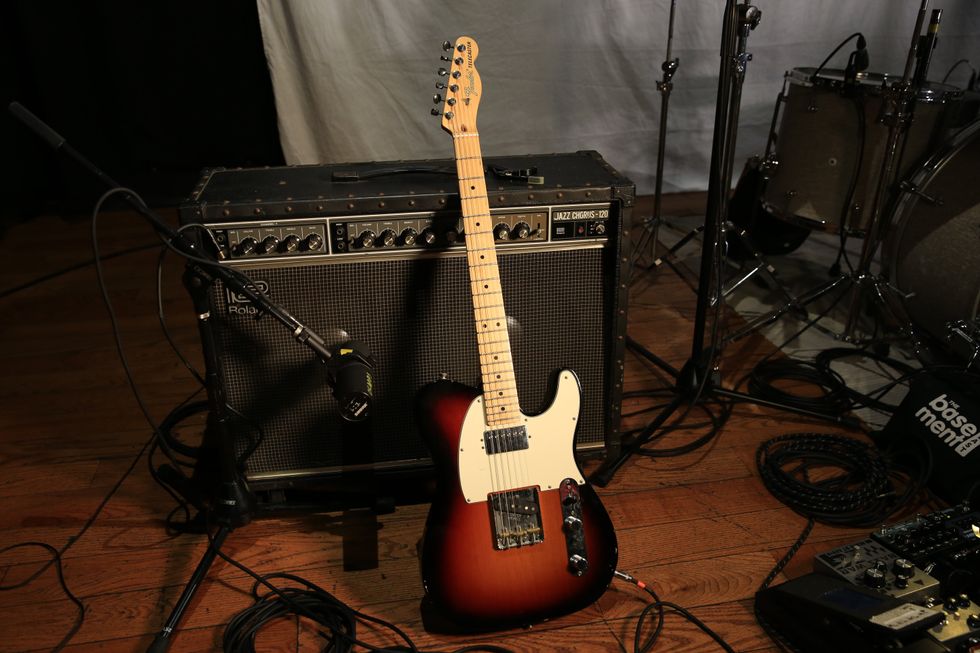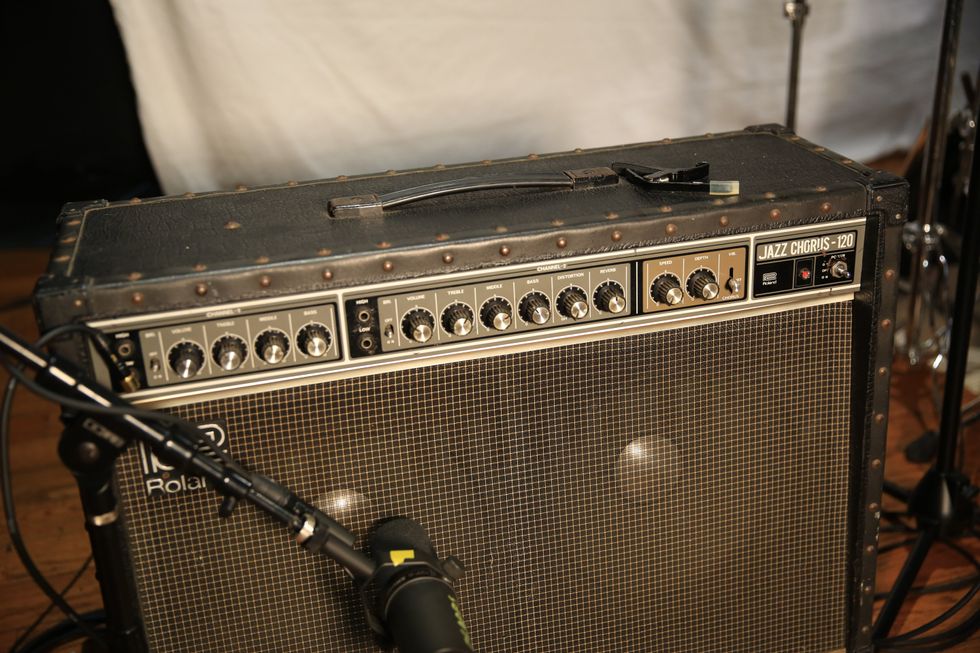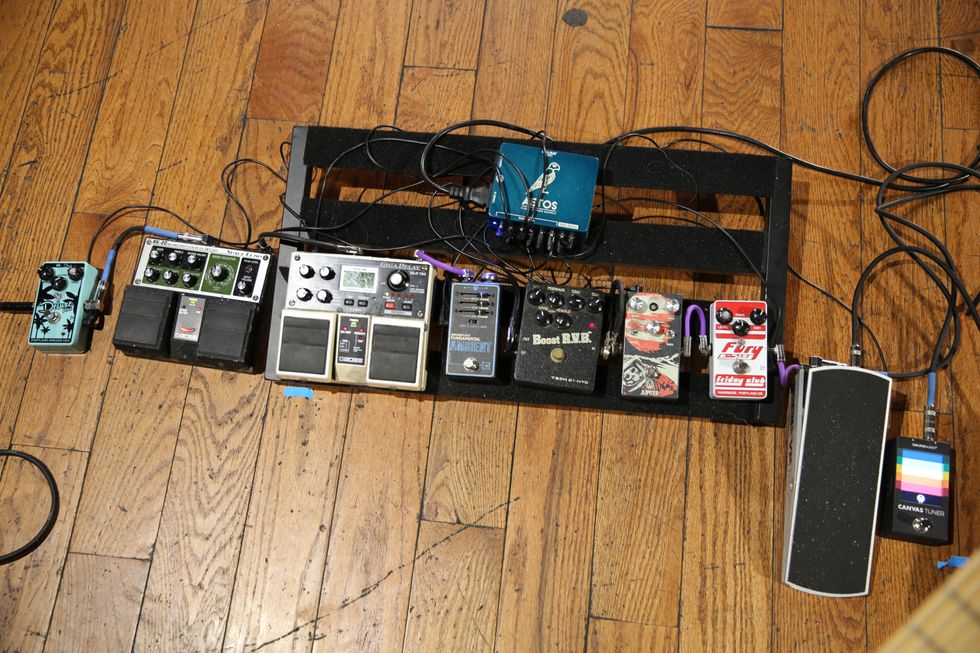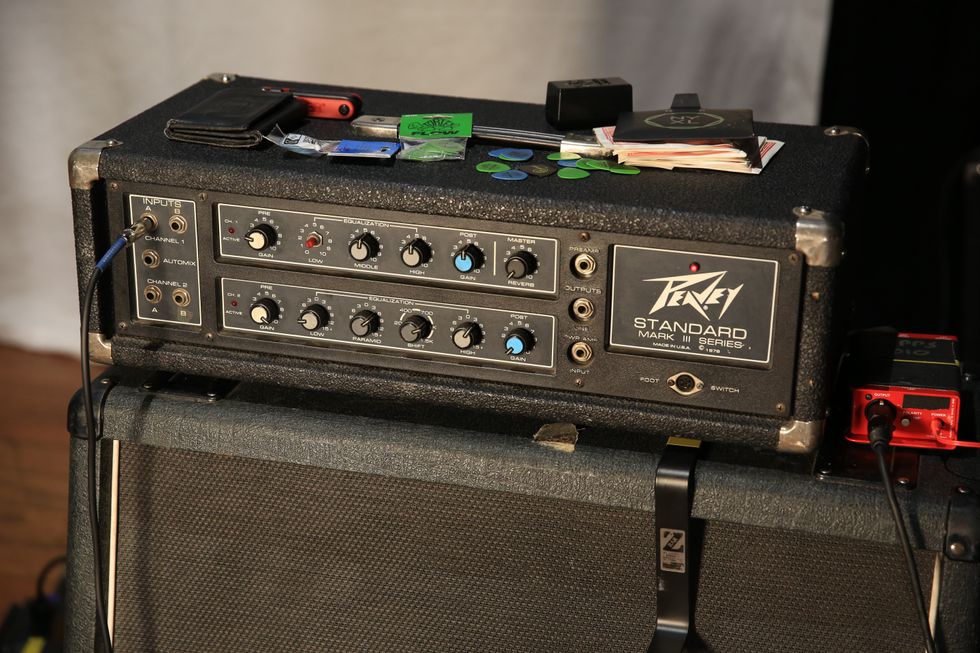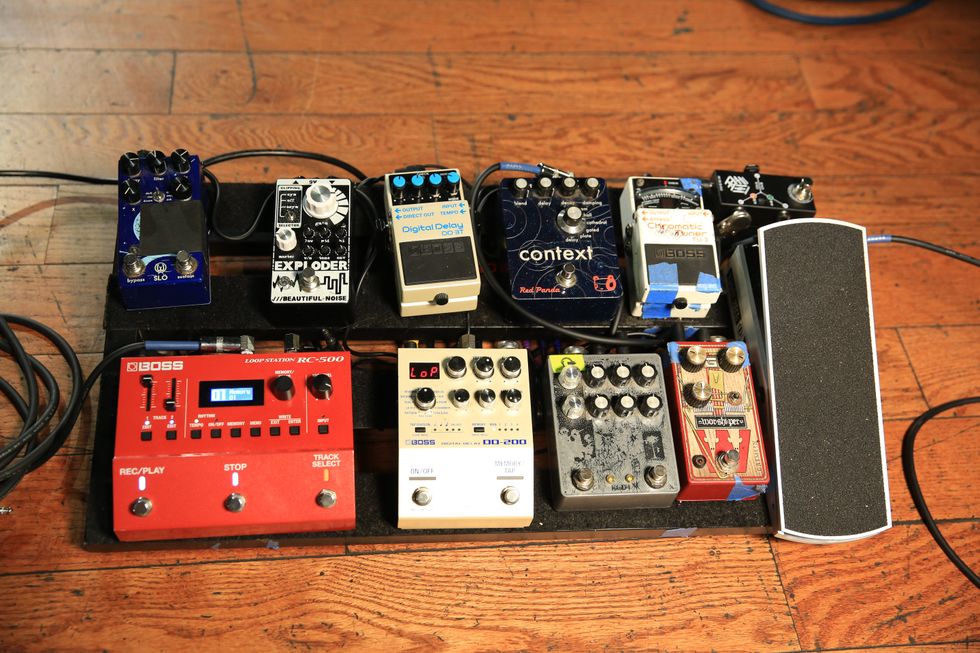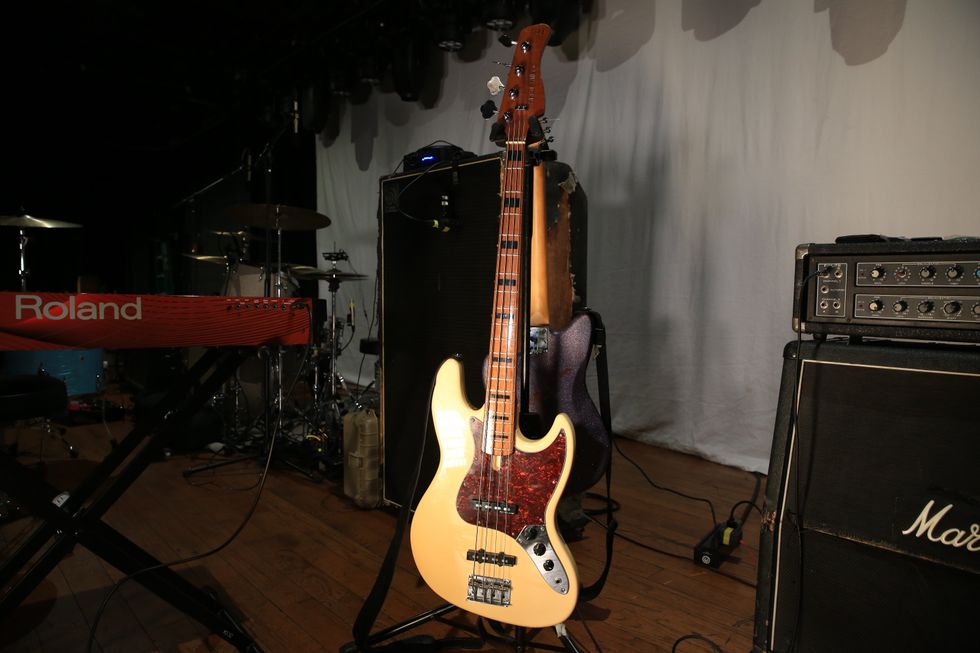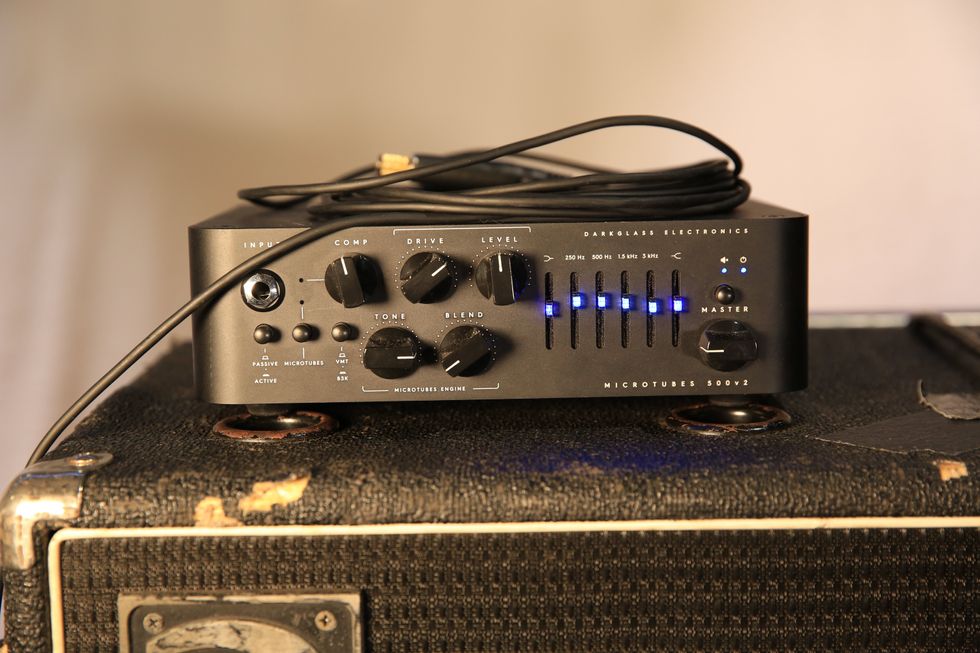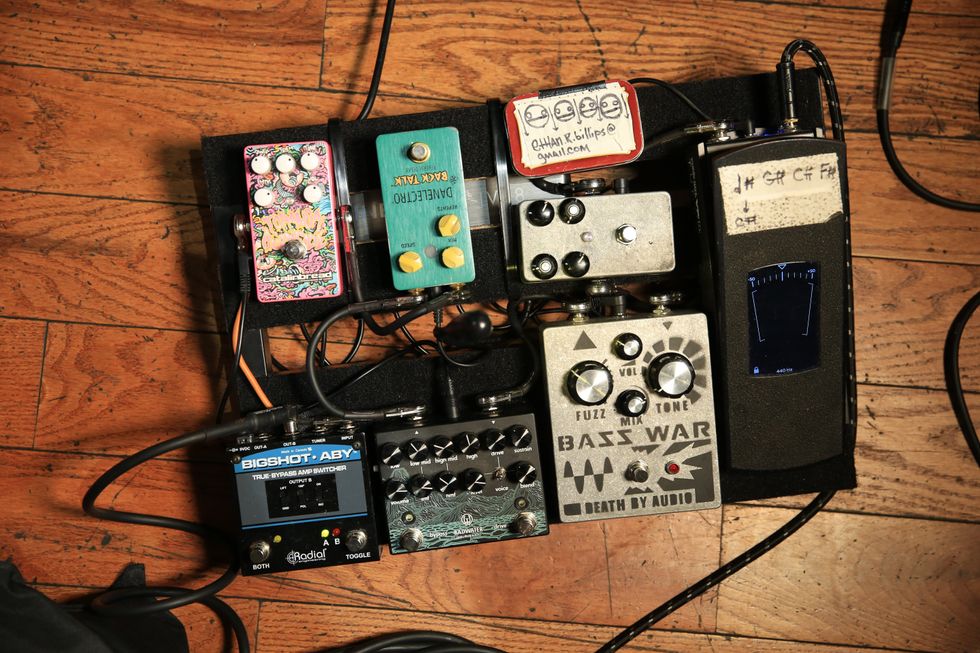The development of the revolutionary Fender Precision Bass in 1951 forever changed the sound of modern music. Since the bass was so functional and portable, Leo Fender thought one model was enough. Its design was upgraded twice during the ’50s, while the preceding versions were discarded. But by 1959, Don Randall at Fender Sales had requested that Leo devise a more sophisticated, high-end bass model along the lines of the recently introduced Jazzmaster. The result was the new-for-1960 Jazz Bass.
Don Randall at Fender Sales had requested that Leo devise a more sophisticated, high-end bass model along the lines of the recently introduced Jazzmaster.
The new Jazz Bass body mirrored the Jazzmaster’s offset contoured style. The neck was narrower at the nut, permitting faster, trouble-free playing for those uncomfortable with the wider Precision Bass neck. This proved popular with session guitar players who doubled on bass. Two single-coil pickups were included for extra tonal versatility. The neck pickup gave a warm, full sound familiar to those used to hearing the Precision Bass. The bridge pickup provided a sharp, trebly attack for adding punch to bass lines or solo fills. Each pickup had a separate volume control, allowing the player to set the desired blend.
The Jazz Bass was conceived as an upscale cousin to the popular Precision Bass,
with styling derived from Fender’s Jazzmaster.
The 1966 Jazz Bass pictured this month is finished in firemist silver, a striking custom color introduced the previous year. While this finish is very rare, the rest of the features are typical of a ’66 Jazz Bass. These include a rosewood fretboard with pearl block inlays (replacing the previous dots), white binding (there was no binding in previous years), a three-ply white vinyl pickguard (changed from greenish nitrocellulose in 1964), two volume controls, a master tone (replacing the stacked volume/tone controls Fender used until 1962), and metal pickup covers.
The 1966 list price for a custom finish Jazz Bass was $285 (plus $59.50 for the case). The current value is $12,500.
The amp in the background is the session player’s dream—the world renowned Ampeg B-15N. This 1963 example originally sold for $355. Its current value is $1,400.
Most J-Bass players removed the pickup covers for better playability—but they sure look pretty.
Sources for this article include The Fender Bass: An Illustrated History by J.W. Black and Albert Molinaro, Fender: The Sound Heard ‘Round The World by Richard R. Smith, and Fender: The Golden Age 1946-1970 by Martin Kelly, Terry Foster, and Paul Kelly, Ampeg: The Story Behind the Sound by Gregg Hopkins and Bill Moore, and the article “The Jazz Bass Guitar: A History and Appreciation,” which appears on Fender’s site.
Original price: 1966 Jazz Bass, $285 plus $59.50 for the case; 1963 Ampeg B-15N, $355.
Current estimated market value: 1966 Jazz Bass, $12,500; 1963 Ampeg B-15N, $1,400.
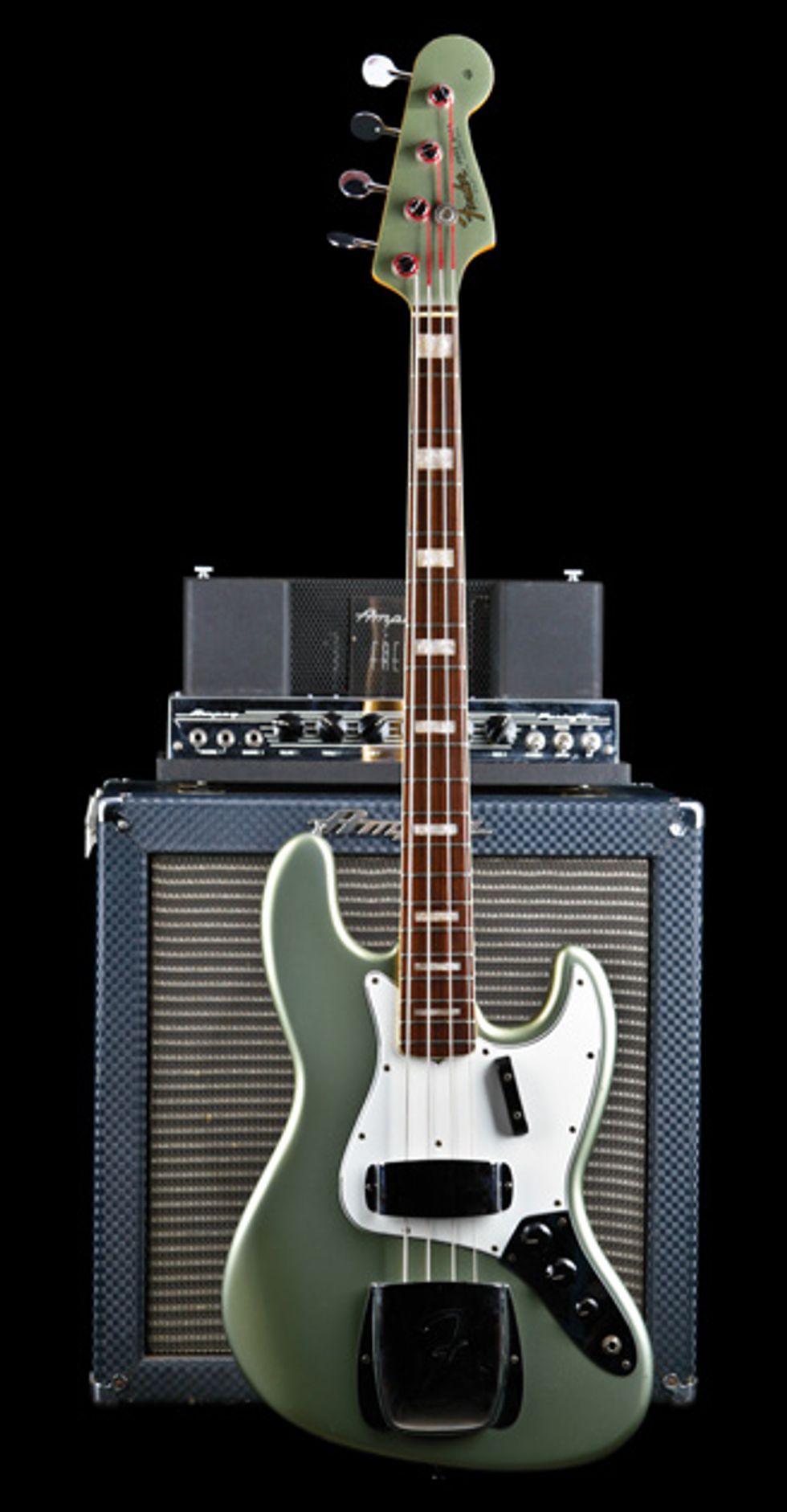
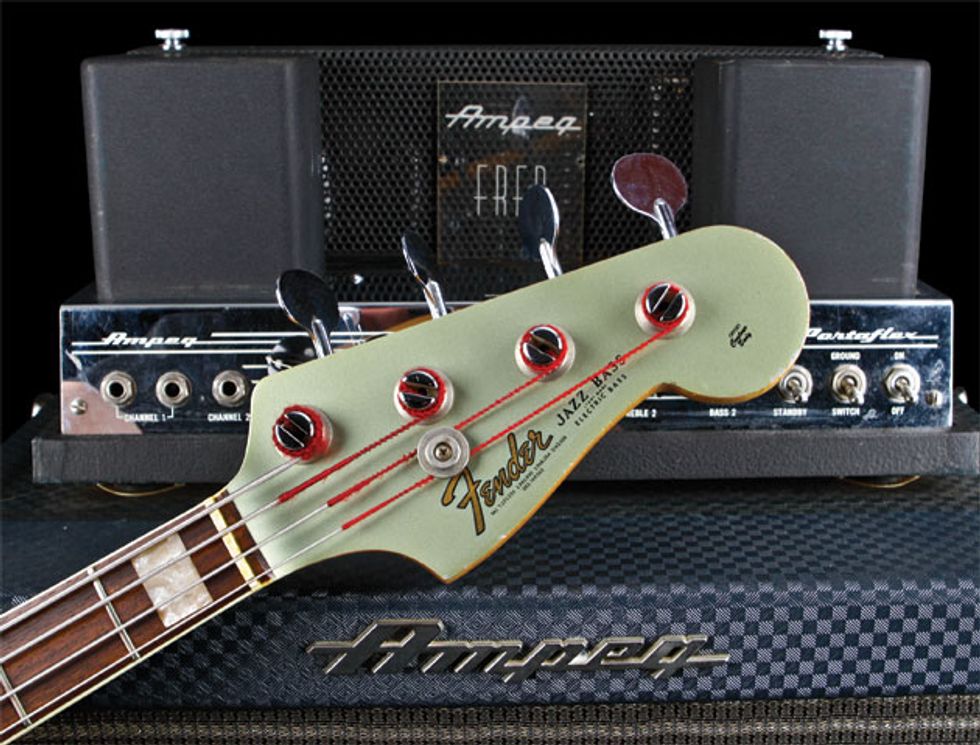
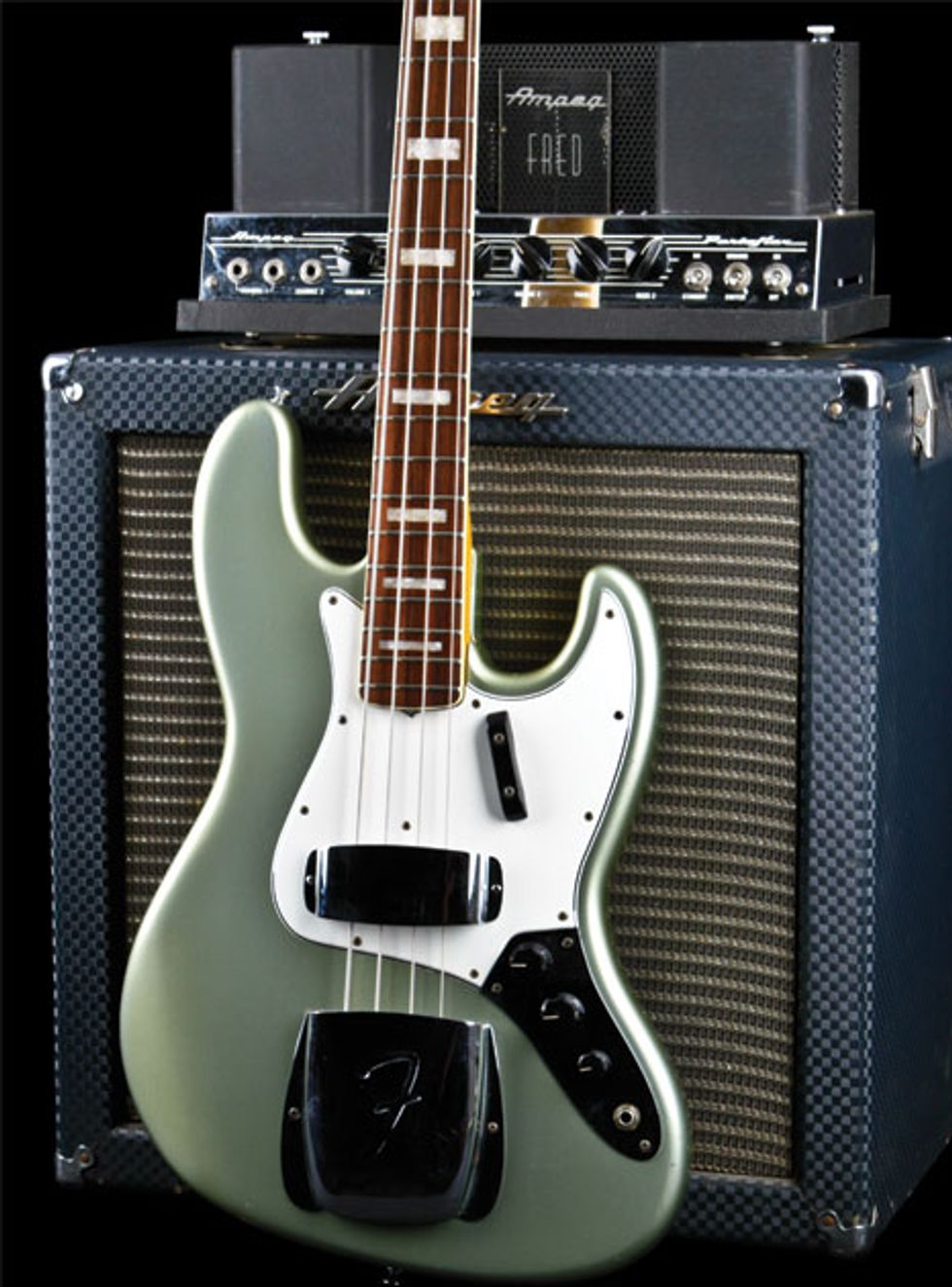
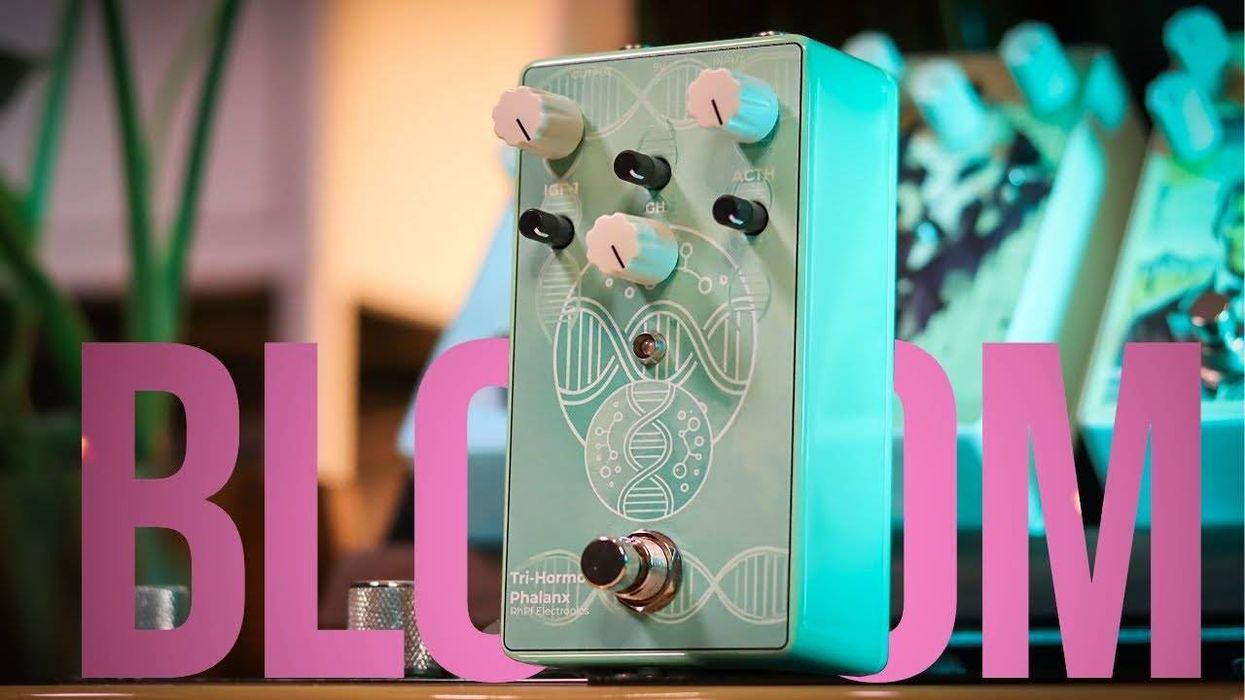
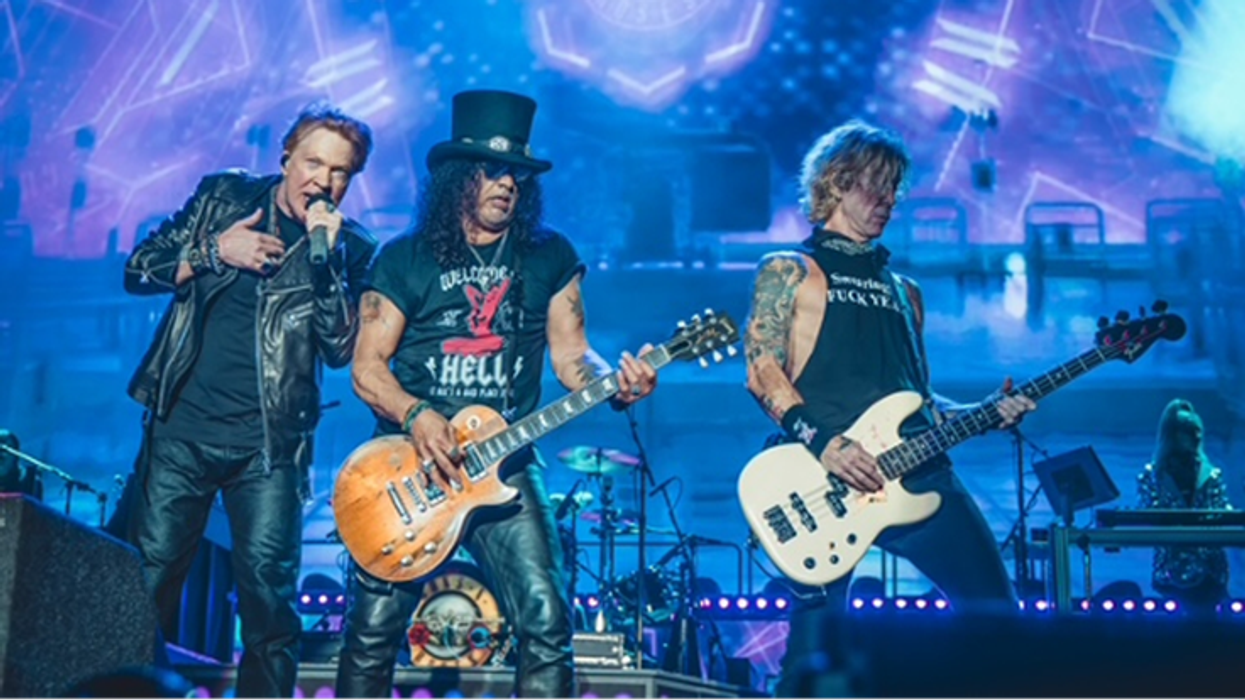
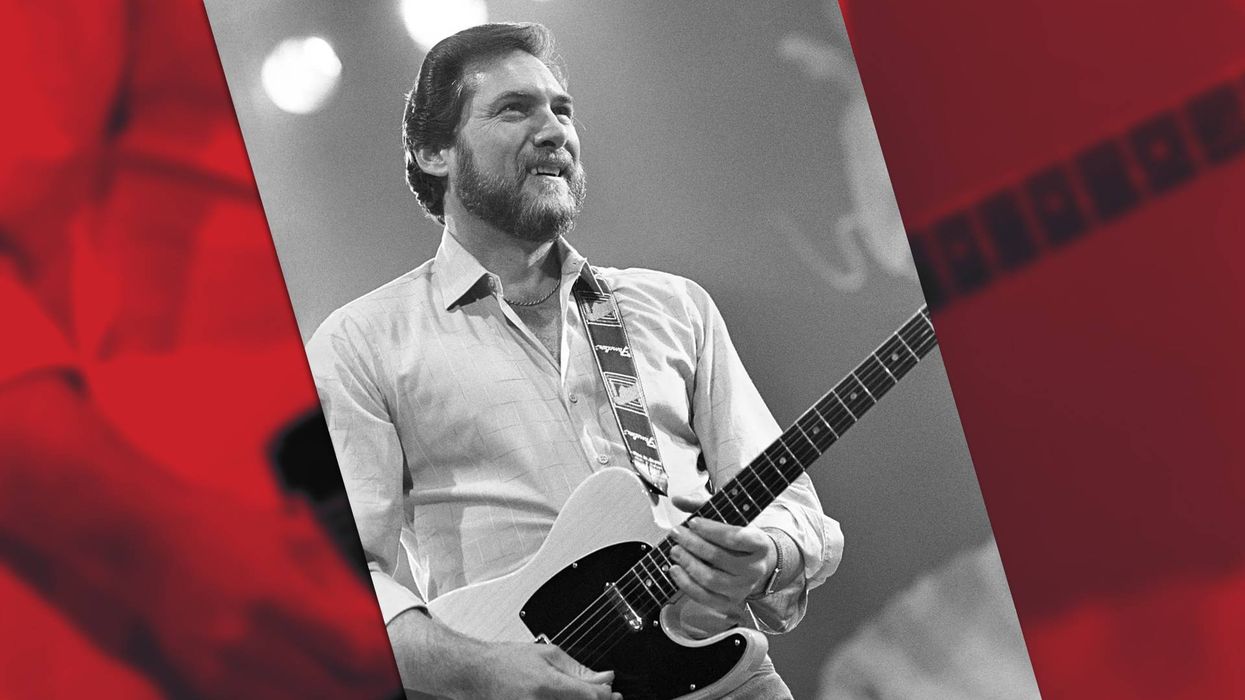
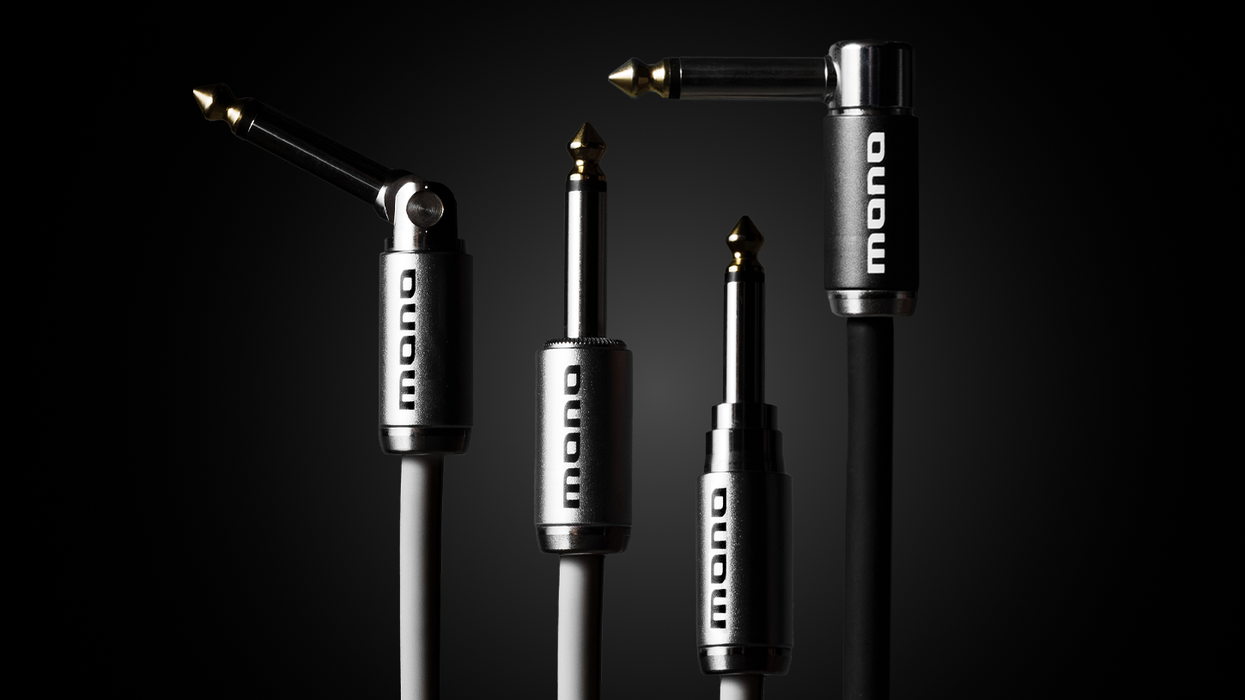
![Rig Rundown: AFI [2025]](https://www.premierguitar.com/media-library/youtube.jpg?id=62064741&width=1245&height=700&quality=70&coordinates=0%2C0%2C0%2C0)












 Shop Scott's Rig
Shop Scott's Rig


